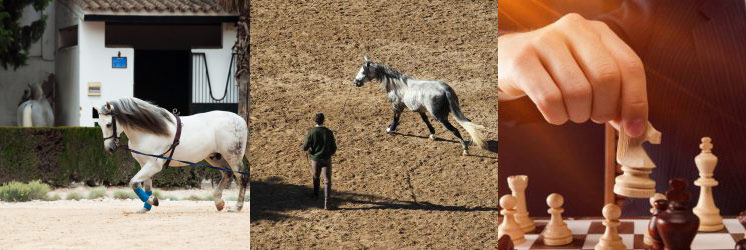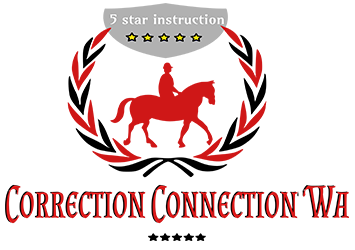
Training Tips through Voice Modulation
February 5, 2019 9:09 pm Leave your thoughtsRespect | Rhythm | Relaxation | Checkmate| Makes – for the winning game
Training Tips through Voice Modulation
Voice Modulation is an aid we can expand on from our posturing exercises, from my past posts and our learning of the term Psycho-cybernetic- (AKA Posturing through mind and body) we also learn how effective the modulation of the voice can be and the connection between the three terms I share as the three R’s. Respect,Relaxation and Rhythm.
In lounging our horses from the beginning I can’t stress enough the importance and structure of using the same words and tone with all commands every time you use them. This tends to be a learned discipline for the handler as well as for the horse.
Lounging horses has more direct posturing affect on horses than what most people use it for or believe. Many people think it’s for wearing a horse down, allowing him to play and exercise at free will. No greater statement can I make than that this is far from the truth. I share with my students that lounging is a way to develop a better sense of center and ultimately gives your horse balance. It helps a rider to develop assertion and direct sense of rhythm and timing. This all connects with the modulating aids we are talking about today. A lounge whip can be very effective. Remember don’t overuse use or abuse, but use as an extended arm in a manner of association of accelerating aids as well as you and your horses timing. This learned discipline correlates with your horse when ready for riding.
I learned many years ago that horses have a keen sense of hearing. They remember sound with the corresponding exercises. It is difficult at times when I am schooling horses for the student, and then the rider is trying to do as I am instructing them, the horse however has learned to follow my voice modulation. It takes the rider to push and adjust the horse to acknowledgement of the aid that is in association with what the horse has heard and processed. At times this could present a problem as the horse is hearing my direction and respectfully following what he has heard.
That being said if you are riding- this would give an overview of the advantages or disadvantages that may arise.
As stated prior, the advantage is the horse repeatedly receives the same aid as he hears the command. The disadvantage is that many times the rider is not timed or in sync with the prompt effectiveness of the command. There is however, several helpful benefits if the rider is new and not savvy at a direct aid and timing being applied, especially if you are moving the horse in upward or downward transitions. Transitions meaning… transitional gaits: upward walk ,trot, canter, and hand gallop. The downward transitions being similar but in the reverse order. The horse can help the rider learn to prepare responsively and effectively. This becomes a great advantage and very helpful to getting the balance work under a riders belt. Later the horse becomes accustom to the riders leg and hand positions and concentration more dependent on the rider with the riders direct aids at the appropriate learned timing, now expressively being adhere to by his rider.
Remember horses want direction- they want a boss a leader. Not a boss that picks or micro manages them, but they are happier when they know what you want. You may think differently however, I have seen and observed many horses that you would label them as “cranky horses.” Through these training techniques I have helped many riders literally make a 180 personality change in their horse. Riders Development become very definitive in the asking and giving of direction and is just what the horse wanted from start.
Horses at times might show you disapproval with a laid back ear, a squeal, a kick at your leg, swishing tail ETC. They don’t want to figure out what you might want, they want you to ask them and give them the direction of what you want and need, REMEMBER It’s a partnership you’ll be surprised when they become your number one partner! (This is a number one problem with most horses I correct today.)
Certainly riders at all levels become more effective at their aids once they find center and balance. Always we stress the application of aid (aid meaning leg and rein position) that goes along with the gait. As riders season and become more clear in their direction and subtleties, it comes together rather nicely.
Use the three association of accelerating aids as well as defining you and your horses timing. As I stated before mind development through the technique of posturing and voice modulation is where we make the biggest changes in your winning edge.
Now lets review some important facts:
In your line work never allow horses to play on a line, this is a great place your horse learns his first discipline in work ethic. An exhorting voice can be effective here and drop of tone if not adhering to the movement forward when asked. The whip touches the horse at the exact time you need a move on to a upward gait or transition. This association helps him to easily gain a response to react on timing of the voice or if riding– leg association. This is a way horses don’t run into the next gait rather learning to hold themselves in a short suspended manner without the flattening or drop of the back.
(NOTE)
For new young horses moving to their under saddle work we do not have expectations of immediate collection work, very important this work comes through the development of circles, serpentine’s lengthen and shorting of gates ETC, it is not accomplished with holding and forcing into a heavy fixed rein, this only gives you a tight rib cage and ultimately a rigid back. When using forceful practices you will work longer and harder to reach your goals. I encourage you to implement the strategies I have shared will result in a positive more successful outcome!
Maintaining engagement and rhythm exercise is key the to learning and strengthening the horse, by developing the top line muscles to hold the rider up and supporting a more rounded or collected position on your horses happy terms!
I hope that these key tips help you to communicate better with your horse. Key responses earn greater respect through your posturing and your understanding of voice modulation, all of what I am sharing with you can be effective in lounge work and in most cases carry over to ride work. I might add, if you are struggling with attitude and disobedience issues I suggest going back, rewind and start back at your line work with the effective strategies I have shared. I know if you posture, you will in turn gain your horses attention and a greater respect, leading you through the training success steps of relaxation and rhythm. I refer to these as the (3 R’S) Once this is established you are well on the right track. Stay tuned for upcoming posts and clinics. I wish you the best always.
All the best Linda Ketter Master trainer /instructor /coach
253-278-1157
Available for Clinics/Instruction
www.correctionconnectionwa.com
Learn better horsemanship skills, develop a happier horse!
Calls us at the above contact number. Looking forward to helping you help your horse!
Categorised in: Training
This post was written by lketter
